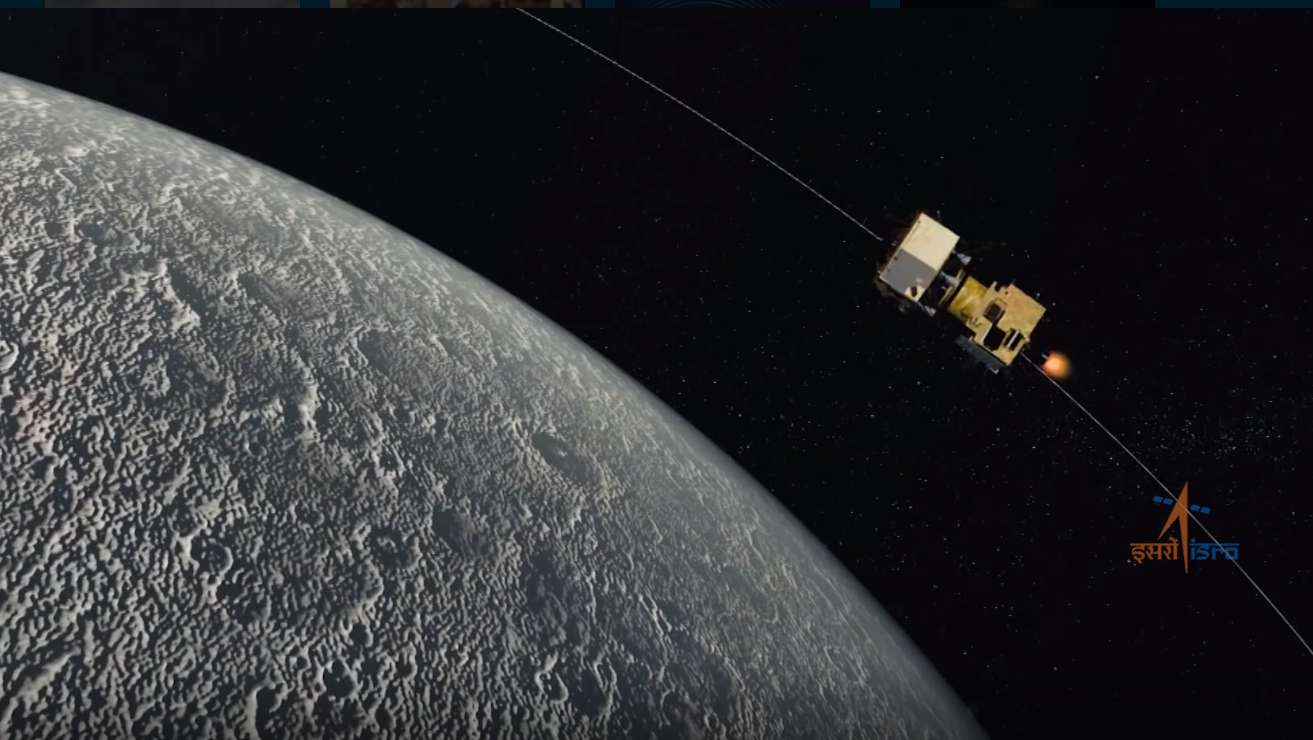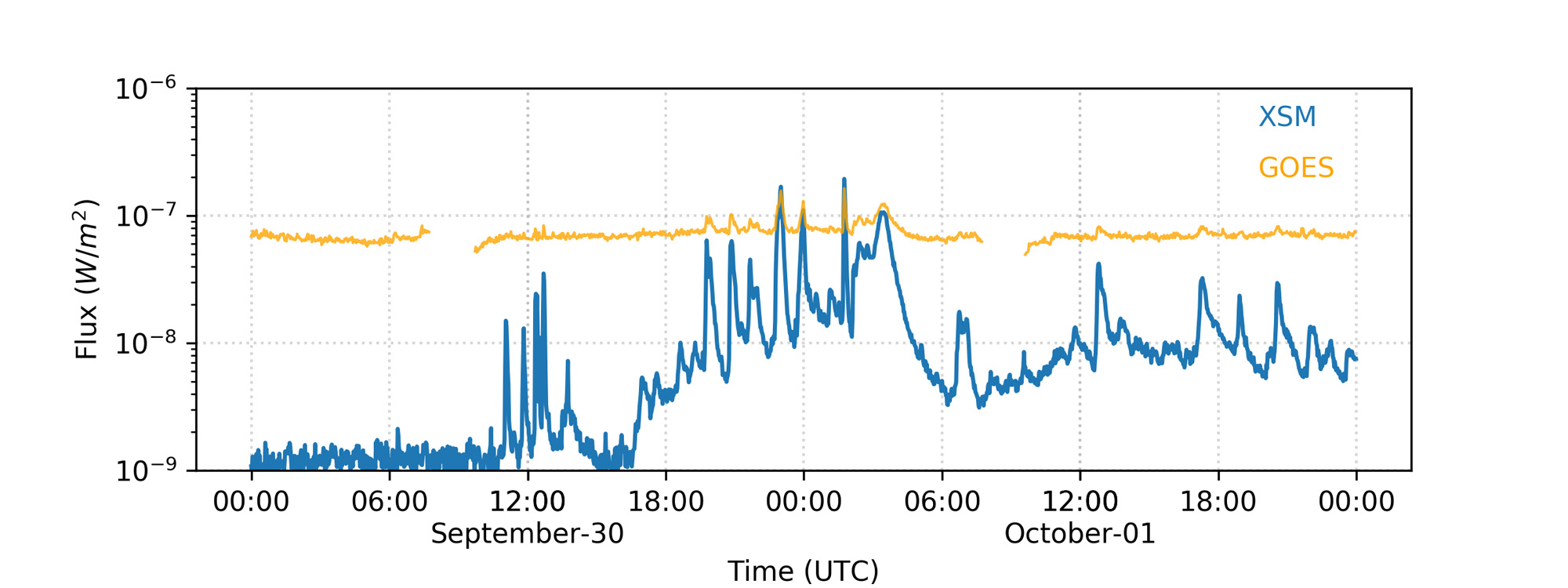India's Chandrayaan-2 Orbiter at the Moon Is Now Tracking Solar Flares

An Indian spacecraft may be orbiting the moon, but it's also gathering valuable data about other key players in our solar system.
India's Chandrayaan-2 mission has caught measurements of a few solar flares on Sept. 30 and Oct. 1. The measurements come courtesy of an instrument designed to help identify elements on the lunar surface.
Ironically, the measurements likely won't be useful in that work — but they could teach scientists something new about the sun and the flares of radiation it emits. The new observations are particularly intriguing because they come while the sun is in the calmest period of its 11-year activity cycle, scientists say.
Related: India's Chandrayaan-2 Mission to the Moon in Photos

The Chandrayaan-2 instrument that gathered the measurements is called the Solar X-ray Monitor, which partners with an instrument called Chandrayaan-2 Large Area Soft X-ray Spectrometer, or CLASS. Both devices measure X-rays; the Solar X-ray Monitor directly measures those coming from the sun, and CLASS measures those bouncing off the moon.
By comparing the two measurements when the spacecraft is more or less directly between the sun and the moon, scientists can determine how the lunar surface responds to X-ray light and, in turn, which elements are present. The solar flare observations can't be used that way because the spacecraft was off to the side, so the angles of the measurements don't line up.
But the Solar X-ray Monitor is much more sensitive than other instruments scientists currently have for measuring solar flares. One of those instruments is on board the GOES-15 weather satellite, which serves as the standard measurement, according to a statement about the new observations released by the Indian Space Research Organisation (ISRO).
Get the Space.com Newsletter
Breaking space news, the latest updates on rocket launches, skywatching events and more!
And on Sept. 30 and Oct. 1, that instrument saw noticeable changes in X-rays coming off the sun. In contrast to the GOES-15 device — which measures just small wiggles before, during and after the flares — Chandrayaan-2's instrument gathered much more sensitive measurements of the flare sequence.
The Chandrayaan-2 orbiter arrived at the moon in early September. Although the lander associated with the mission seems to have crashed during touchdown, the orbiter is working perfectly, according to ISRO.
- India's Chandrayaan-2 Spacecraft Snaps Its First Picture of the Moon
- Amazing Moon Photos from NASA's Lunar Reconnaissance Orbiter
- Stunning Photos Show Earth from India's Spacecraft Headed to the Moon
Email Meghan Bartels at mbartels@space.com or follow her @meghanbartels. Follow us on Twitter @Spacedotcom and on Facebook.

Join our Space Forums to keep talking space on the latest missions, night sky and more! And if you have a news tip, correction or comment, let us know at: community@space.com.

Meghan is a senior writer at Space.com and has more than five years' experience as a science journalist based in New York City. She joined Space.com in July 2018, with previous writing published in outlets including Newsweek and Audubon. Meghan earned an MA in science journalism from New York University and a BA in classics from Georgetown University, and in her free time she enjoys reading and visiting museums. Follow her on Twitter at @meghanbartels.









